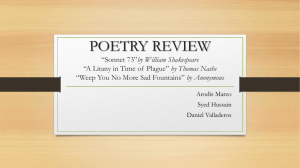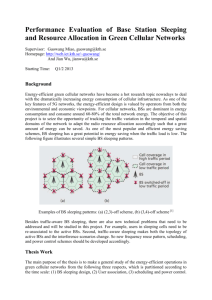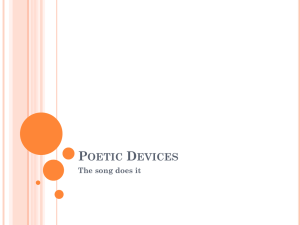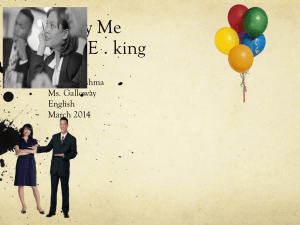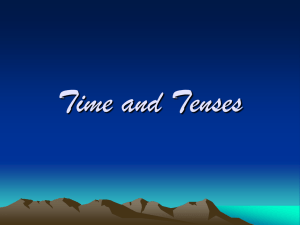Weep You No More, Sad Fountains
advertisement
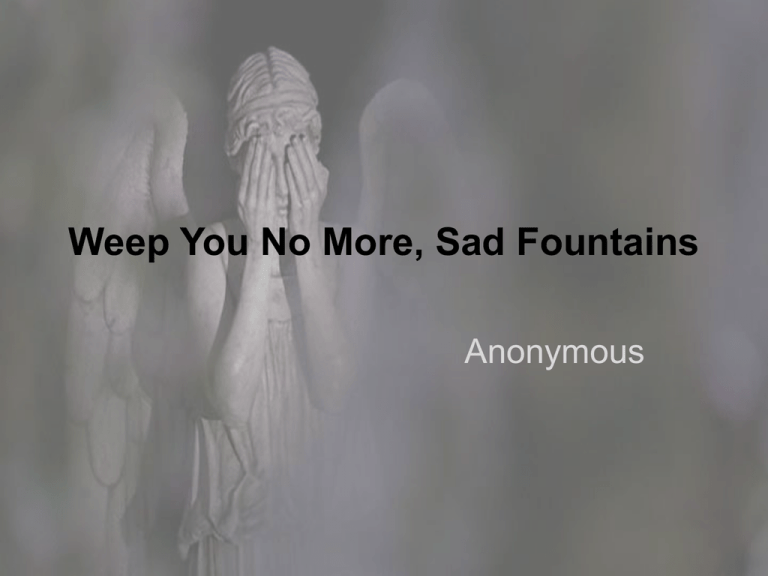
Weep You No More, Sad Fountains Anonymous Background • This poem may have originated as a ballad performed by lutenists in 17th century British courts. • John Dowland, a popular composer in King James’ court, is often credited as the composer of this song. • Since this was composed around Queen Elizabeth’s death, many believe the song mourns her passing because “she lies sleeping” but also expresses hope for the future as “the sun rise[s] smiling.” • The reference to the fountains reveals an aristocratic awareness as only wealthy individuals had access to water for ornamental purposes. Many felt the spray of the fountain resembled weeping—hence the title. Structure • The song is an Elizabethan ballad with variations in format. • Stress is placed on the first syllable, followed by two unstressed syllables. • The primary meter of the song is dactylic and trochaic with variances in the number of feet in each line. • Because the meter moves from stressed to unstressed syllables, it is called falling meter. This adds to the somber tone of the poem. • The single word (“sleeping”) that ends both stanzas is stressed by its solitude and the falling meter. • Rhyme is used throughout the poem to add musicality to the soothing song. • Kate Winslet sang this song in Sense and Sensibility, and Sting recorded the song on his album Songs from the Labyrinth. Weep You No More, Sad Fountains Weep you no more, sad fountains; Sleep is a reconciling, What need you flow so fast? A rest that peace begets. Look how the snowy mountains Doth not the sun rise smiling Heaven’s sun doth gently waste. When fair at even he sets? But my sun’s heavenly eyes Rest you then, rest, sad eyes, View not your weeping, Melt not in weeping That now lie sleeping While she lies sleeping Softly, now softly lies Softly, now softly lies Sleeping. Sleeping. http://www.youtube.com/watch?v=eMvZGJGqj8M Through imperatives, the speaker implores the personified fountains to stop crying. Since fountains were owned by the wealthy, the speaker addresses an aristocratic audience. “Heaven’s sun” is the center of the universe inferring that an important person has died. God does not recognize the despair. Also, the use of “my” shows the importance of this death to speaker. Refrain contains caesura to highlight the “soft” “sleep. Weep you no more, sad fountains; What need you flow so fast? Look how the snowy mountains Heaven’s sun doth gently waste. But my sun’s heavenly eyes View not your weeping, That now lie sleeping Softly, now softly lies Sleeping. Sleeping, which is repeated twice, infers death, so the death of someone (Queen Elizabeth?) has made the mourning excessive. Line references abundance of tears. The metaphors (“snowy mountains” and “Heaven’s sun” show how snow melts slowly; thus, they may mourn for years, but regardless, the crying must stop. Metaphor suggests that we accept death as “a rest.” Rhetorical question shows that life continues despite losses. Lines comfort those mourning. Monochromatic words combined with caesura show solicitude. Allusion to the Bible, Psalm 4:8—”I will both lay me down in peace, and sleep: for you, Lord, only make me dwell in safety” (Bilblos, 2004). These two lines equate sleep Sleep is a reconciling, with death and the acceptance of death A rest that peace begets. (“reconciling”). Doth not the sun rise smiling When fair at even he sets? Rest you then, rest, sad eyes, Melt not in weeping Use of “she” alludes to the death While she lies sleeping of a female, perhaps Queen Elizabeth. Softly, now softly lies Sleeping. Tone The tone of the song is soothing as it sounds like a lullaby meant to comfort a child. Though a sad subject, the message implores the mourner to cease crying for the deceased is now in a peaceful place. Works Cited http://www.cieliterature.com/2014/03/31/weep-you-no-more-sadfountains/ http://hubpages.com/hub/Weep-You-No-More-Sad-Fountains-Reviewof-the-Elizabethan-Poem

